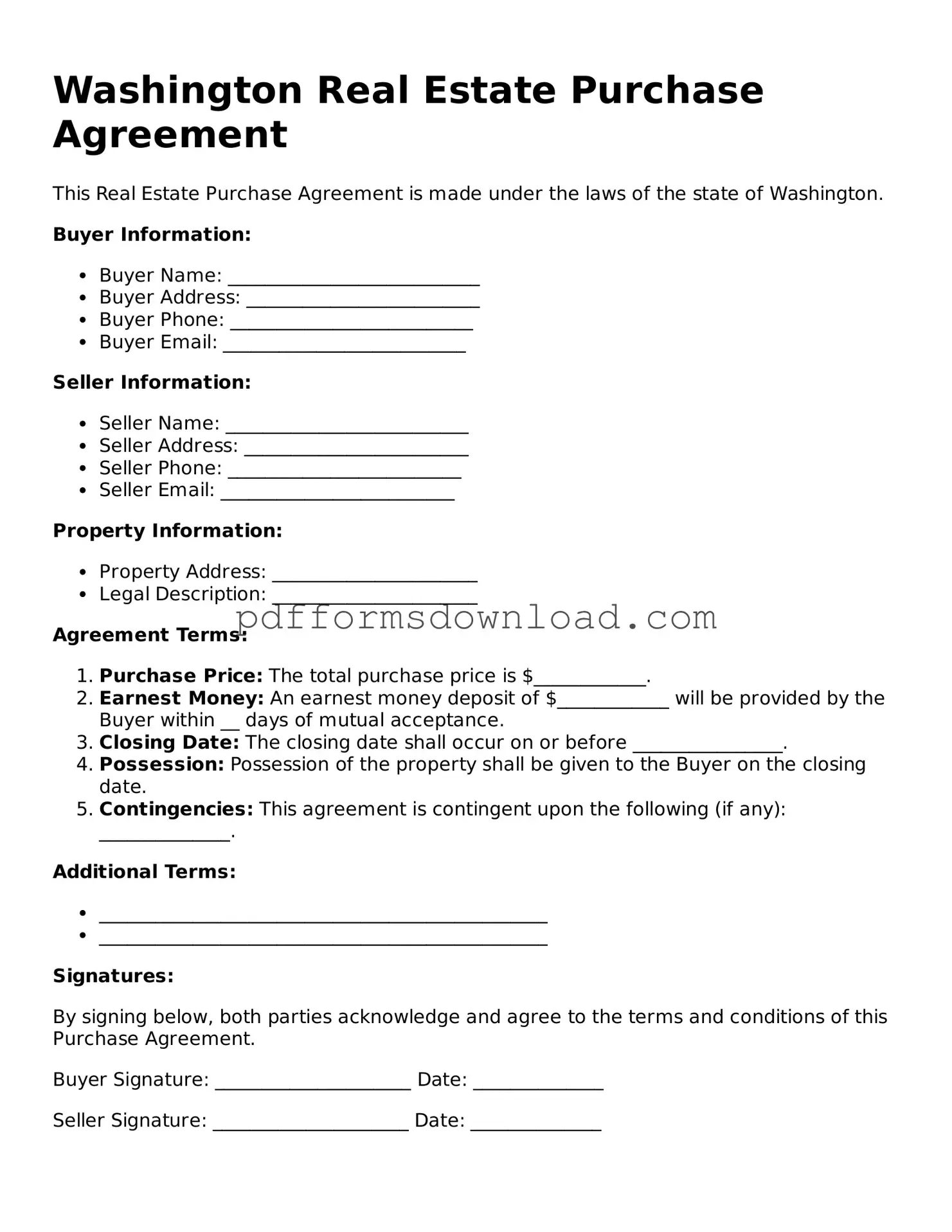What is a Washington Real Estate Purchase Agreement?
The Washington Real Estate Purchase Agreement is a legally binding document used when buying or selling real estate in Washington State. It outlines the terms and conditions of the sale, including the purchase price, property description, and any contingencies that must be met before the sale can proceed.
Who needs to sign the Real Estate Purchase Agreement?
Both the buyer and seller must sign the agreement. If the property is owned by multiple parties, all owners need to sign. This ensures that everyone involved is in agreement with the terms laid out in the document.
What are contingencies in the agreement?
Contingencies are conditions that must be met for the sale to go through. Common contingencies include financing approval, home inspections, and the sale of the buyer's current home. These protect both parties by allowing them to back out if certain conditions aren’t satisfied.
Can the agreement be modified after signing?
Yes, the agreement can be modified if both parties agree to the changes. Any modifications should be documented in writing and signed by both the buyer and seller to ensure clarity and enforceability.
What happens if one party breaches the agreement?
If one party fails to uphold their end of the agreement, the other party may have legal recourse. This could include seeking damages or specific performance, which means asking the court to enforce the terms of the agreement. It's essential to consult with a legal professional in such situations.
Is it necessary to have a real estate agent when using this agreement?
While it is not legally required to have a real estate agent, it is highly recommended. Agents can provide valuable guidance, help navigate the complexities of the agreement, and ensure that all necessary disclosures are made.
Where can I find a copy of the Washington Real Estate Purchase Agreement?
You can obtain a copy of the Washington Real Estate Purchase Agreement from various sources, including real estate agents, legal professionals, or online legal document providers. Make sure to use a version that complies with current Washington State laws.
